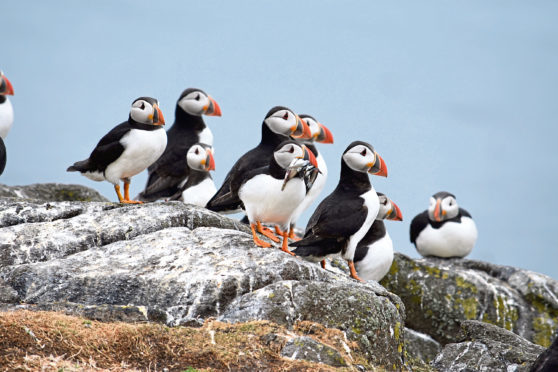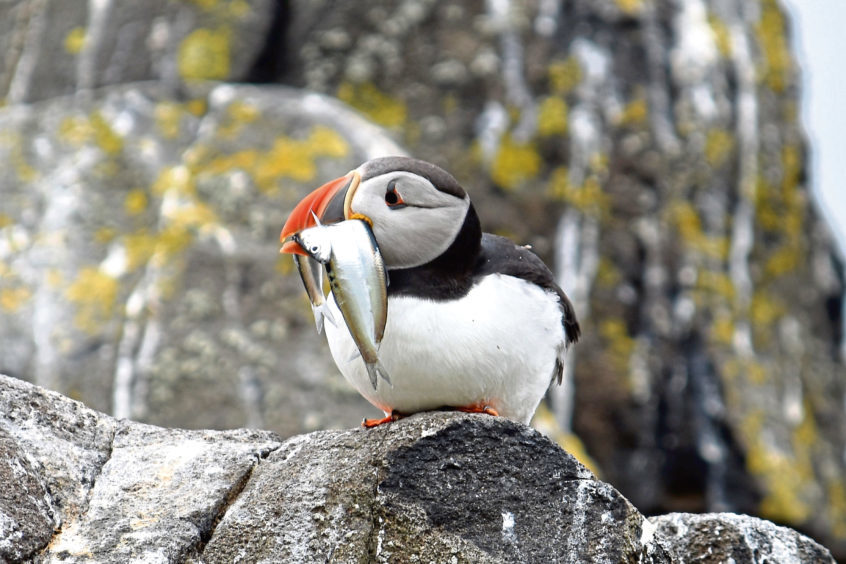It is a conundrum I had never previously pondered, but as I watched this puffin standing on a rocky bluff on the Isle of May with its beak packed full of sprats, the inevitable question arose – how is it able to catch several fish at a time, one-after-another, without dropping some it has already caught?
Well, as ever with nature, it’s all down to a clever anatomical design where the puffin’s rough tongue holds fish against little spines on the palate, enabling it to open its beak to catch even more. Ten fish is an average catch before returning back to its nesting burrow to feed the puffling inside, but there is one record of a puffin holding more than 60 little fish.
The Isle of May at the mouth of the Firth of Forth is such a special place, and I was delighted to be back on the island, courtesy of the Scottish Seabird Centre at North Berwick. A national nature reserve managed by Scottish Natural Heritage, it is home to around a quarter of a million birds during the breeding season and is one of the jewels in Scotland’s natural crown.
This puffin with its beakful of glistening fish looked at me for a while longer, before deciding all was well, and on whirring wings swept down a grassy slope and disappeared with its catch into its nesting burrow. The puffins here seem to have had a relatively good breeding season with the dry summer suiting their needs perfectly and there being plenty of small fish about.
It has, however, not been so positive for other seabirds on the island, with the ‘Beast from the East’ and cold start to the spring affecting many. In general, breeding numbers are down, although not in a significant way to ring any alarm bells. There is, however, a degree of concern about kittiwakes, with the majority of birds taking a year-off from breeding.
I wandered on and by a small path leading towards the towering cliffs of Bishop’s Cove, the air was full of puffins, their wings beating furiously as they whizzed up a shallow valley.
The viewpoint above the cove is truly magnificent, with razorbills, guillemots and fulmars all so tantalisingly close. This was a place to sit and watch, to reflect on nature and gaze upon the open horizons caressed by a riffling sea breeze.
The guillemot and razorbill chicks were getting big and soon they will embark upon one of the most challenging moments of their lives when they jump from their cliff ledges and down into the churning sea below. Appropriately known as ‘jumplings’, many of these young birds will succumb as they hit rocks below or are swooped upon by ravenous gulls.
But once in the water, these youngsters will have arrived in their true home – the ocean, a place where they feel at ease and where they can dive for food with all the skill and agility of a predatory fish.
Info
The Isle of May is also a nationally important site for breeding grey seals, with over 2,000 seal pups born on the island from mid-October to December.

